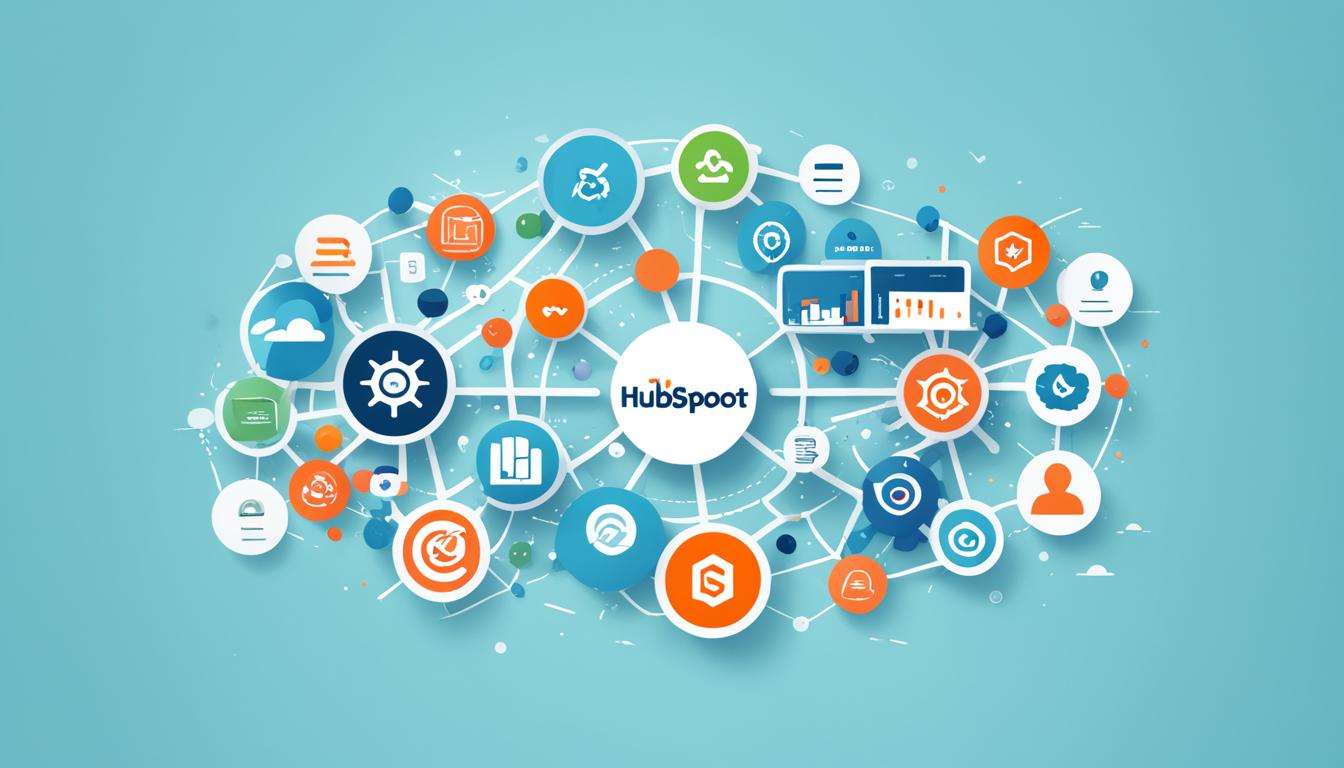Did you know that a whopping 90% of people can remember a brand’s musical signature, while only 10% can recall the brand’s visual icon? This incredible fact emphasizes the crucial role that music and sound play in creating a brand identity. Referred to as music branding, sonic branding, or sound branding, this entails creating a distinct auditory identity for a brand through melodies, sound effects, and catchy tunes. By strategically using music and sounds, brands can establish emotional connections with their audience, differentiate themselves from competitors, and boost brand recognition.
Key Takeaways:
- Music branding is the expression of a brand’s identity through sound.
- Brands can establish emotional connections and increase brand recognition through music and sound.
- Creating a unique musical identity involves understanding brand values, target audience, musical DNA, and signature sound.
- Practical tips for building a musical identity include creating playlists, collaborating with local artists, and incorporating music strategically into content.
- A distinctive musical identity leads to increased brand recognition, customer loyalty, and differentiation from competitors.
The Power of Music in Branding
Music has an incredible power to evoke emotions, create lasting memories, and differentiate brands from their competitors. Through the use of jingles, sound effects, and theme songs, companies can establish a unique musical identity that enhances brand recognition and fosters a deep emotional connection with customers.
One remarkable example that demonstrates the effectiveness of music in branding is Coca-Cola’s iconic jingle, “I’d Like to Buy the World a Coke.” This unforgettable melody is synonymous with the brand and has played a significant role in reinforcing Coca-Cola’s identity and connecting with consumers on a profound level.
“I’d Like to Buy the World a Coke”
By incorporating music strategically into their branding efforts, companies can tap into the power of sound to create a distinctive and memorable impression. Through carefully crafted melodies and harmonies, brands can establish an emotional connection with their target audience, leaving a lasting impact that goes beyond visual communication alone.
Enhancing Brand Recognition
Music acts as a powerful mnemonic device, helping consumers remember and recognize a brand more easily. When a jingle or a musical theme becomes associated with a brand, hearing it can trigger immediate brand recall. This association strengthens brand recognition, ensuring that the brand remains at the forefront of consumers’ minds.
Fostering Emotional Connection
Music has the unique ability to evoke emotions and create powerful associations. By carefully selecting music that aligns with their brand values and resonates with their target audience, companies can foster a deep emotional connection. Whether it’s a catchy jingle that boosts spirits or a soulful melody that stirs up nostalgia, music can evoke specific emotions that enhance consumer engagement and loyalty.
Brand Differentiation
In a crowded marketplace, standing out from competitors is essential. By developing a unique musical identity, brands can differentiate themselves and create a memorable impression. The right music can communicate the brand’s personality, values, and positioning in a way that sets it apart from the competition. It becomes a powerful tool for attracting attention, establishing a distinct identity, and forging a stronger connection with the target audience.
Music in branding is not just a background element; it is a powerful tool that influences perception, enhances recognition, and fosters emotional connections. By harnessing the power of music, brands can create a lasting impact that resonates with consumers and sets them apart in the competitive marketplace.
Defining Your Musical Identity
Before establishing a musical identity, we must have a clear understanding of our brand’s values, personality, and the message we want to convey. It is crucial to identify our target audience, their interests, and the type of music that resonates with them.
Our brand values serve as a foundation for our musical identity. They shape the tone, style, and emotions we want to evoke through our music. Whether we aim for a sense of excitement, trust, or sophistication, our brand values guide the musical choices we make.
Understanding our target audience is equally essential. We need to delve into their preferences, cultural influences, and musical tastes. By doing so, we can create a musical narrative that strikes a chord with them and fosters a genuine connection.
“Music speaks what cannot be expressed, soothes the mind and gives it rest, heals the heart and makes it whole, flows from heaven to the soul.” – Anonymous
Our musical DNA encompasses elements such as tempo, rhythm, melody, and instrumentation. These elements are the building blocks that shape our sound. Each aspect contributes to the emotional impact and resonance our music will have with the audience.
Choosing the right music genre is a vital step in defining our musical identity. The genre should reflect our brand’s identity and values while resonating with our target audience’s musical preferences. By aligning our music genre with our brand and audience, we ensure a cohesive and authentic connection.
Creating a signature sound is the pinnacle of our musical identity. It is the unique sonic fingerprint that sets us apart from others. Developing a signature sound involves exploring distinctive musical motifs, original compositions, and identifiable sonic elements that become synonymous with our brand.

| Steps to Define Our Musical Identity |
|---|
| Understand our brand values |
| Identify our target audience |
| Define our musical DNA |
| Choose the right music genre |
| Create a signature sound |
Practical Tips for Building Your Musical Identity
Building a unique musical identity is crucial for brands looking to establish a strong presence in the market. To help you in this journey, we have compiled practical tips that will guide you in building a musical identity that resonates with your target audience and reflects your brand’s values.
Create Engaging Playlists
Playlists are a powerful tool for connecting with your audience. By curating playlists that align with your target audience’s preferences and values, you can create a captivating musical experience that enhances their interaction with your brand. Consider incorporating both popular tracks and hidden gems to create a well-rounded playlist that keeps your audience coming back for more.
Establish Consistent Musical Themes
Consistency is key when it comes to building a musical identity. By establishing consistent musical themes that align with your brand and its products, you can create a cohesive and recognizable sonic experience for your audience. Whether it’s a catchy jingle, a particular sound effect, or a signature musical motif, incorporating these themes across various touchpoints will enhance brand recognition and user experience.
Collaborate with Local Artists
Collaborating with local artists not only supports your local community but also adds a unique flavor to your musical identity. Local artists bring their own creativity and perspective, which can help infuse your brand’s musical identity with authenticity and originality. By partnering with local talents, you create a win-win situation, fostering a sense of community while establishing a distinct musical identity.
Incorporate Music Strategically
Music is a powerful tool that should be incorporated strategically across all aspects of your brand’s content strategy. From videos and podcasts to social media posts, strategically incorporating music creates an immersive and engaging experience for your audience. Consider using music to set the tone, evoke emotions, and enhance your brand messages. Utilize music not only as background but as an integral part of your content to create a lasting impact on your audience.
Tips for Building Your Musical Identity
| Tips | Description |
|---|---|
| Create Engaging Playlists | Curate playlists that align with your audience’s preferences and values to create an immersive musical experience. |
| Establish Consistent Musical Themes | Create recognizable musical themes that are associated with your brand and its products to enhance brand recognition and user experience. |
| Collaborate with Local Artists | Partner with local artists to add authenticity and originality to your musical identity while supporting the local community. |
| Incorporate Music Strategically | Strategically use music across all aspects of your content strategy to create an immersive and engaging experience for your audience. |
By following these practical tips, you can build a compelling musical identity that resonates with your audience, strengthens your brand, and sets you apart from the competition.

The Benefits of a Distinctive Musical Identity
A distinctive musical identity can have a profound impact on your brand’s success. It can help increase brand recognition, foster customer loyalty, and set you apart from your competitors. By creating a unique and memorable musical identity, you can leave a lasting impression on your audience, ensuring that they remember and engage with your brand.
When your brand has a distinctive musical identity, it becomes easier for consumers to recognize and recall your brand. The right music can evoke powerful emotions and create a strong connection with your target audience. This emotional connection plays a crucial role in building brand recognition and ensuring that your brand remains top-of-mind.
“Our distinctive musical identity has been instrumental in building brand recognition and customer loyalty. The emotional connection our music creates has resonated deeply with our audience, making us stand out in a crowded marketplace.”
Customer loyalty is another significant benefit of a distinctive musical identity. When your audience feels emotionally connected to your brand through music, they are more likely to develop a sense of loyalty and affinity towards your brand. This loyalty translates into repeat customers, advocacy, and increased customer lifetime value.
By standing out from your competitors with a unique musical identity, you can attract new customers and build a stronger brand presence. In a crowded marketplace, it’s essential to differentiate yourself, and a distinctive musical identity can help you do just that. When you have a memorable musical identity, consumers are more likely to choose your brand over your competitors.
| Benefits of a Distinctive Musical Identity |
|---|
| 1. Increased brand recognition |
| 2. Fostered customer loyalty |
| 3. Stand out from competitors |
Investing in a distinctive musical identity is a strategic decision that can have a significant impact on your brand’s success. It enables you to create a strong emotional connection with your audience, differentiate yourself from competitors, and build a loyal customer base. By harnessing the power of music in your branding efforts, you can elevate your brand and leave a lasting impression on consumers.

The Future of Sonic Branding
As the world becomes more digitalized, the role of sonic branding in both physical and digital contexts has become increasingly important. Sonic branding involves the creation of custom soundscapes for virtual environments and the use of music and sound effects that are tailored to a brand’s messaging and identity.
Consistency is a key factor in successful sonic branding, regardless of the context in which it is used. By developing guidelines for the use of music and sound across different platforms and environments, brands can ensure a consistent and recognizable experience for their users.

In today’s digital age, where consumers are constantly exposed to various forms of media, it is crucial for brands to maintain consistency in their sonic branding. Whether it’s a commercial on television, a mobile app, or an online advertisement, the sound associated with a brand should be consistent and instantly recognizable.
“Consistency in sonic branding helps to create a strong and lasting impression on consumers. It builds familiarity and reinforces a brand’s identity in their minds.” – Sound of You
By leveraging sonic branding in digital contexts, brands can enhance their online presence and create a cohesive brand experience across different digital touchpoints. This consistency helps to establish brand trust and loyalty among consumers, fostering a strong emotional connection between the brand and its audience.
The Role of Sonic Branding in Physical and Digital Contexts
Sonic branding is not limited to digital platforms alone. Physical environments also play a significant role in shaping a brand’s identity. For example, retail stores and physical spaces can benefit from carefully curated soundscapes that reflect the brand’s values and enhance the overall shopping experience.
In the digital realm, sonic branding can create immersive and engaging experiences for users. As technology continues to advance, brands have the opportunity to integrate sound and music into virtual reality, augmented reality, and other emerging digital platforms. This allows for a more interactive and memorable user experience, further strengthening the brand-consumer relationship.
Ensuring Consistency in Sonic Branding
To maintain consistency in sonic branding, brands should establish clear guidelines for the use of music and sound across different platforms and environments. These guidelines should outline the brand’s musical identity, including its musical DNA, genre preferences, and signature sound.
Additionally, brands should regularly monitor and test the effectiveness of their sonic branding efforts. Feedback from consumers and data analysis can provide valuable insights on how sound impacts brand perception and engagement. This information can be used to refine and improve the brand’s sonic identity over time.
Creating a Relevant and Unique Sonic Identity
To create a relevant and unique sonic identity, we must understand the powerful emotional impact of music on people. By analyzing music based on human psychology, we can delve deeper into the connection between music and emotions. Thanks to cutting-edge tools like the NeedScope Music AI, brands now have the means to identify the specific emotions that different music tracks evoke.
With the NeedScope Music AI, we can analyze and interpret the emotional nuances present in various music tracks. This invaluable tool helps us select the right music that aligns with the desired emotional impact we want to achieve through our brand’s positioning. By considering the emotions we want to target, we can strategically choose music tracks and sonic assets that resonate strongly with our audience.
“By analyzing music based on human psychology and using tools like the NeedScope Music AI, we can identify the emotions specific music tracks evoke.”
In this process, we take advantage of our understanding of human psychology, harnessing the emotional power of music to establish a deep and lasting connection with our audience. Whether it’s evoking feelings of excitement, nostalgia, calmness, or joy, strategically selected music has the potential to create an immersive and memorable brand experience.
By incorporating the emotional impact of music into our branding efforts, we can engage our audience on a profound level and leave a lasting impression. Music has the unique ability to spark emotions and evoke memories, making it a valuable tool in shaping our brand’s identity and fostering a strong emotional bond with our customers.

Through the careful analysis of music based on human psychology and leveraging advanced tools like the NeedScope Music AI, we can create a sonic identity that not only captures our brand’s essence but also resonates deeply with our target audience. By aligning our sonic assets with the desired emotional impact, we can build a truly relevant and unique sonic identity that sets us apart in the market.
The Emotional Impact of Music
| Emotion | Music Genre |
|---|---|
| Joy | Pop, Dance |
| Sadness | Ballads, Classical |
| Excitement | Rock, Electronic |
| Calmness | Ambient, Classical |
As the table above illustrates, different emotions can be effectively conveyed through specific music genres. This understanding allows us to curate soundscapes that align with our desired emotional impact and deliver a compelling experience for our audience.
In summary, by analyzing music based on human psychology and utilizing innovative tools like the NeedScope Music AI, we can create a relevant and unique sonic identity that resonates with our audience on an emotional level. Music has the power to evoke emotions, and by leveraging this power, we can establish a deep connection with our customers and differentiate ourselves in the market.
Developing a Unique Sound Identity in Practice
When it comes to developing a unique sound identity for your brand, collaboration between production and marketing teams is crucial. By establishing a common understanding, we can ensure that the sound identity aligns with the brand’s overall vision and objectives.
To start the process, it is important to create guidelines for the sound identity that are practical and relevant to your brand. These guidelines should take into account key brand competencies, such as the brand’s values, personality, and target audience.
By understanding the essence of your brand, we can translate these attributes into musical elements. Tempo, rhythm, texture, and other musical attributes can be used to reflect the brand’s unique identity and create a cohesive sound experience for your customers.
One effective tool for capturing the desired attributes of your brand’s sound identity is an audio mood board. This board includes musical samples, soundscapes, and emotional cues that represent the sonic world you want to create. By using visual and auditory references, the audio mood board helps to ensure that everyone involved in the process has a shared understanding of the desired sound.
Implementing new music based on these guidelines and the audio mood board can lead to positive improvements in the overall brand experience. By consistently incorporating the sound identity across various touchpoints, such as commercials, apps, and in-store experiences, you can create a cohesive and memorable brand presence.
Remember, developing a unique sound identity is not a one-time task but an ongoing process. It requires continuous refinement and adaptation to meet the changing needs and preferences of your target audience.

| Benefits of Developing a Unique Sound Identity |
|---|
| 1. Enhanced brand recognition and recall |
| 2. Stronger emotional connection with customers |
| 3. Differentiation from competitors |
| 4. Increased brand loyalty and trust |
| 5. Consistent and cohesive brand experience |
The Role of Sound in Brand Building
Sound plays a crucial role in brand building. The effects of music in retail settings show a clear link between music likability and increased customer visits. Brands can create unique soundscapes in retail environments to enhance the atmosphere and mood. Incorporating sound into advertising campaigns can also be highly effective in reinforcing brand messaging.
The Impact of Music in Retail Settings
The impact of music on consumer behavior in retail settings is well-documented. Studies have shown that music can influence the perception of wait times, affect purchasing decisions, and enhance the overall shopping experience. When customers enjoy the music playing in a store, they tend to spend more time browsing and are more likely to make a purchase.
“”The effects of music on shopper behavior are rooted in a psychological phenomenon known as the mere exposure effect. When people are repeatedly exposed to music they like, they develop a preference for it and consequently have a more positive perception of the environment in which it is played.” – Billboard”
Creating Unique Soundscapes in Retail Environments
To create a unique and immersive shopping experience, brands can curate soundscapes that align with their brand identity and target audience. By carefully selecting music that reflects the brand’s values and resonates with customers, retailers can establish a cohesive and memorable atmosphere.
- Choose music genres that complement the brand’s image, whether it’s soothing melodies for a spa or upbeat tunes for a fashion retailer.
- Consider the tempo, rhythm, and volume of the music to create the desired ambiance.
- Integrate sound effects that enhance the atmosphere, such as the sound of a coffee machine in a cozy café or waves crashing in a beach-themed store.
Incorporating Sound into Advertising Campaigns
Sound is a powerful tool in advertising, as it can evoke emotions, capture attention, and reinforce brand messaging. By incorporating sound into advertising campaigns, brands can create a unique and memorable experience for their audience.
- Develop catchy jingles or theme songs that customers associate with the brand.
- Use sound effects strategically to reinforce the message and create a sense of urgency or excitement.
- Consider the tone and style of the voiceover accompanying audio to align with the brand’s personality.
By leveraging the power of sound in retail settings and advertising campaigns, brands can enhance their brand identity, engage with customers on a deeper level, and differentiate themselves from competitors.

The Sound of You: Sound of You, a Leading Audio Branding Agency
At Sound of You, we take pride in being an international network of award-winning composers, specializing in creating music for various media productions, events, artists, and brands. Our expertise lies in harnessing the power of audio to enhance brand identities and create impactful experiences for audiences.
Through our unique SOY Audio branding program, we have garnered recommendations and recognition from design and innovation councils, solidifying our position as a trusted audio branding agency. Our team understands that sound is more than just a background element; it has the ability to evoke emotions, convey messages, and leave a lasting impression on listeners.
“The right sound can captivate hearts, enhance memories, and inspire action.
With Sound of You, you can trust us to create the perfect sound that represents and communicates the identity of your brand. We work closely with our clients to understand their vision, values, and target audience, ensuring that every musical composition is aligned with their goals and resonates with their listeners.
We offer a range of services tailored to meet the unique needs of our clients:
- Custom Music Production: Our team of talented composers will create original music that captures the essence of your brand and enhances your media productions, events, or artistic projects.
- Audio Branding Strategy: We help brands develop a cohesive audio identity and integrate it seamlessly into their overall brand strategy, ensuring consistency across all touchpoints.
- Sound Design and Effects: From impactful sound effects to immersive sonic environments, we bring expertise in crafting audio experiences that elevate your brand’s content.
- Collaboration with Artists: We foster collaborations between brands and artists, providing opportunities to showcase your brand’s values and support talented individuals in the industry.
With Sound of You, you can elevate your brand through the power of audio. Let us help you create a memorable sonic identity that connects with your target audience and sets you apart from the competition.
Table: Services Offered by Sound of You
| Service | Description |
|---|---|
| Custom Music Production | Create original music for media productions, events, artists, and brands that represents their unique identity and resonates with their audience. |
| Audio Branding Strategy | Develop a cohesive audio identity that aligns with the brand’s values and integrates it seamlessly into the overall brand strategy. |
| Sound Design and Effects | Craft impactful sound effects and immersive sonic environments to enhance the brand’s content and create memorable audio experiences. |
| Collaboration with Artists | Foster collaborations between brands and artists to showcase brand values and support talented individuals in the industry. |

Conclusion
Building brand identity with music is a powerful strategy that allows brands to create emotional connections with consumers and differentiate themselves from competitors. Sonic branding, through the use of sound and music, enables brands to establish a unique and memorable identity that resonates with their target audience. By understanding the emotional impact of music, brands can craft sound identities that reflect their values and effectively communicate their message.
The importance of sonic branding cannot be overstated. It helps brands to achieve higher brand recognition and perceptions of advertising strength. Through the power of music, brands can evoke emotions, create lasting memories, and stand out in a crowded marketplace. Take the example of Coca-Cola’s iconic jingle, “I’d Like to Buy the World a Coke,” which has created a deep emotional connection with consumers and reinforced the brand’s identity for decades.
As we move into the future, advancements in digital media and technologies offer exciting opportunities for sonic branding. Brands can leverage these advancements to create immersive and engaging sonic experiences across various digital platforms. A distinctive musical identity will continue to play a crucial role in building brand recognition, fostering customer loyalty, and making a lasting impact on consumers.
FAQ
What is sonic branding?
Sonic branding is the expression of your brand through sound, involving the creation of a distinct audio identity using elements such as jingles, sound effects, and background music.
How does music play a role in branding?
Music evokes emotions, creates memories, and differentiates a brand from competitors, enhancing brand recognition and connecting with customers on an emotional level.
What factors should brands consider when defining their musical identity?
Brands should understand their brand values, target audience, and the type of music that resonates with them. They should also determine their musical DNA, including tempo, rhythm, melody, and instrumentation.
How can brands build their musical identity?
Brands can create playlists that align with their audience’s preferences, establish consistent musical themes, collaborate with local artists, and strategically incorporate music in their content strategy.
What are the benefits of having a distinctive musical identity?
A distinctive musical identity leads to increased brand recognition, customer loyalty, and helps brands stand out in a crowded marketplace.
What is the future of sonic branding?
With increasing digitalization, the importance of sonic branding in both physical and digital contexts will continue to grow, offering new opportunities to create immersive sonic experiences.
How can brands create a unique and relevant sonic identity?
Brands should understand the emotional impact of music by analyzing it based on human psychology. Tools like the NeedScope Music AI can help identify the emotions specific music tracks evoke.
How can brands develop a unique sound identity in practice?
Guidelines for sound identity should be practical and relevant, taking into account key brand competencies and translating them into musical attributes. An audio mood board capturing desired attributes can be created to support the brand’s positioning.
What is the role of sound in brand building?
Sound plays a crucial role in brand building, as it can enhance the atmosphere and mood in retail environments and reinforce brand messaging in advertising campaigns.
Who is Sound of You and how can they help with audio branding?
Sound of You is an international network of award-winning composers specializing in creating music for various media productions, events, artists, and brands. Their unique SOY Audio branding program helps clients create the perfect sound that represents and communicates their identity.
What is the importance of building brand identity with music?
Building brand identity with music through sonic branding helps establish emotional connections with consumers, differentiate from competitors, and create memorable brand experiences.










